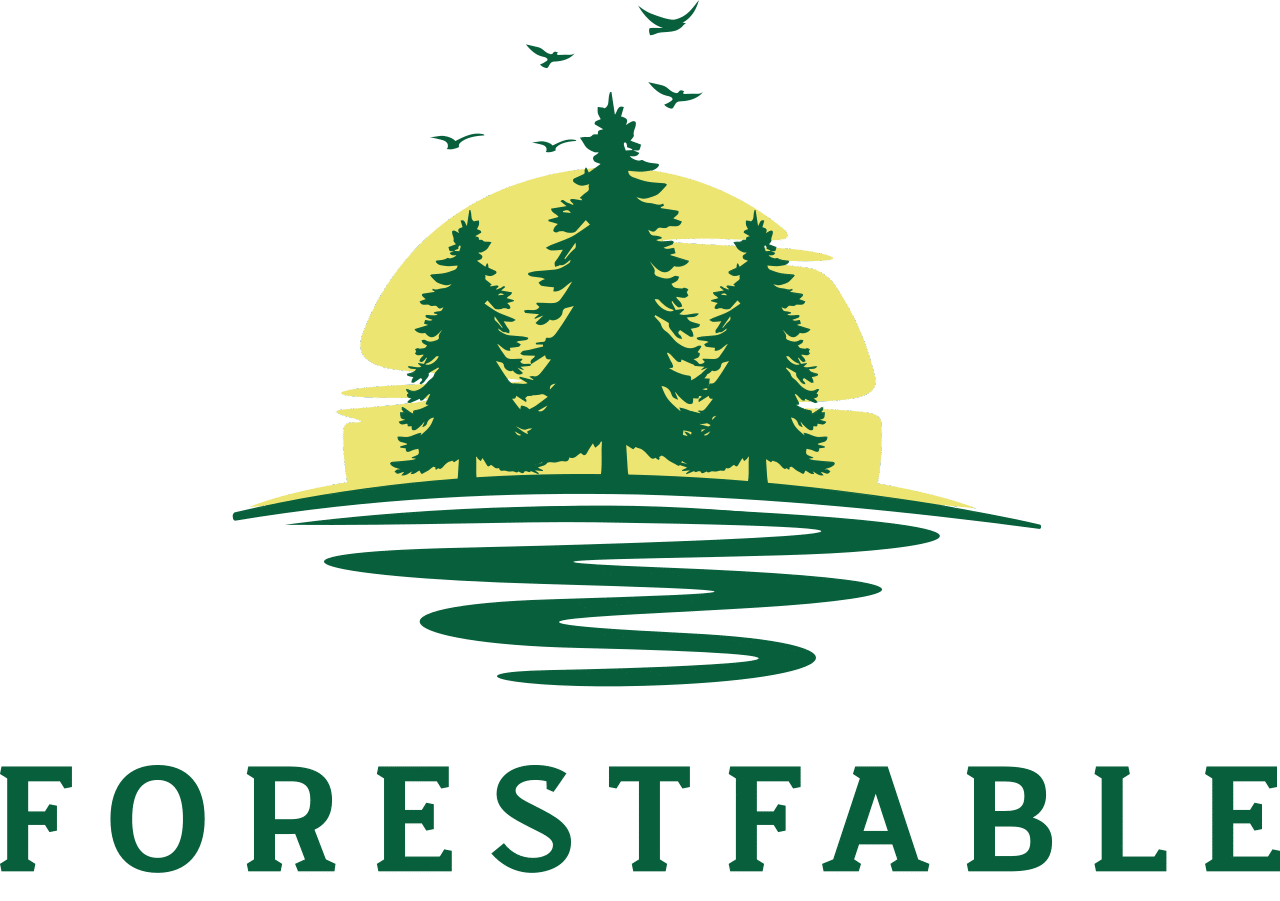Owning or managing forested land comes with immense opportunities and responsibilities. Whether you’re a private landowner, a conservation group, or a government agency, your decisions about timber, wildlife, and ecosystem health have long-term impacts. This is where a professional forester becomes invaluable. A forester brings expertise, strategic planning, and sustainable practices to ensure your land thrives economically, environmentally, and socially. In this 2,000-word article, we explore why working with a forester is essential, detailing their role, benefits, and real-world impact. From maximizing timber revenue to enhancing biodiversity and navigating regulations, a forester is your partner in responsible land stewardship. Here’s why you should consider hiring one in 2025.
What is a Forester?
A forester is a trained professional specializing in the science, art, and practice of managing forests and woodlands. They hold degrees in forestry, natural resources, or related fields, often supplemented by certifications like those from the Society of American Foresters (SAF) or state-specific licenses (e.g., North Carolina’s Registered Forester). Foresters combine knowledge of ecology, silviculture, economics, and policy to balance the needs of landowners with environmental sustainability.
Foresters work with diverse clients, including private landowners, timber companies, conservation organizations, and government agencies. Their services range from timber harvesting and reforestation to wildlife habitat management, carbon credit programs, and recreational planning. Unlike arborists, who focus on individual trees in urban settings, foresters manage entire forest ecosystems, addressing both short-term goals (e.g., timber sales) and long-term health (e.g., soil conservation). In 2025, with increasing pressures from climate change, urban sprawl, and regulatory shifts, their expertise is more critical than ever.
The Role of a Forester
A forester’s role is multifaceted, tailored to the landowner’s objectives and the land’s unique characteristics. Their primary responsibilities include:
- Forest Management Planning: Creating comprehensive plans that outline goals, such as timber production, wildlife preservation, or recreation, while ensuring sustainability. These plans, often spanning decades, account for soil types, tree species, and environmental factors.
- Timber Management: Assessing timber value, planning harvests, and coordinating sales to maximize revenue while maintaining forest health. This includes selective cutting, thinning, or clear-cutting, depending on the forest’s needs.
- Reforestation and Regeneration: Advising on replanting strategies, species selection, and site preparation to restore forests after harvests or natural disturbances like fires.
- Wildlife and Biodiversity Management: Enhancing habitats for species like deer, birds, or endangered plants, ensuring forests support diverse ecosystems.
- Regulatory Compliance: Navigating complex environmental laws, permits, and certifications (e.g., Forest Stewardship Council) to ensure legal and sustainable practices.
- Climate and Carbon Strategies: Enrolling landowners in carbon credit programs or advising on climate-resilient practices, such as planting drought-tolerant species.
- Risk Management: Mitigating threats like invasive species, pests (e.g., emerald ash borer), wildfires, or erosion through proactive measures.
By integrating science and practical experience, foresters align your goals—whether financial, ecological, or recreational—with the land’s long-term potential.
Why Work With a Forester?
The benefits of hiring a forester extend far beyond basic tree care. Here are the key reasons why their expertise is essential for landowners in 2025:
1. Maximizing Economic Returns
Forests can be a significant financial asset, but mismanaging timber sales or land use can lead to lost revenue. A forester ensures you get the most value from your forest resources:
- Timber Sales Expertise: Foresters assess timber quality and market conditions to secure the best prices. They negotiate with buyers, draft contracts, and oversee harvests to prevent exploitation. For example, the American Forest Foundation notes that foresters can increase timber sale revenue by 20–50% through proper planning.
- Diversified Income Streams: Beyond timber, foresters identify opportunities like agroforestry (e.g., maple syrup production), hunting leases, or carbon credits. The USDA Forest Service reports that carbon markets could generate $1,000–$5,000 per acre annually for some landowners.
- Cost Efficiency: Foresters help you access government cost-share programs, such as the USDA’s Conservation Reserve Program, to fund reforestation or habitat restoration, reducing out-of-pocket expenses.
Without a forester, landowners risk undervaluing their timber or missing alternative revenue sources, costing thousands over time.
2. Ensuring Sustainable Practices
Sustainability is at the heart of professional forestry. Foresters are trained to balance immediate needs with long-term forest health:
- Healthy Ecosystems: Through selective harvesting and reforestation, foresters maintain soil fertility, water quality, and biodiversity. For instance, they may recommend leaving “legacy trees” to support wildlife, as advised by the Michigan DNR.
- Climate Resilience: With climate change increasing risks like droughts and pests, foresters select species and practices to enhance forest adaptability. The Forest Stewards Guild emphasizes planting diverse, native trees to withstand shifting conditions.
- Certification: Foresters help certify forests under programs like the Sustainable Forestry Initiative, boosting timber value and appealing to eco-conscious buyers.
By prioritizing sustainability, foresters ensure your land remains productive for generations, aligning with 2025’s growing demand for green practices.
3. Navigating Complex Regulations
Forestry is governed by a web of federal, state, and local regulations, from wetland protections to logging permits. A forester’s expertise ensures compliance, saving you from costly fines or legal issues:
- Permitting: Foresters handle permits for timber harvests, road construction, or prescribed burns, ensuring adherence to laws like the Clean Water Act.
- Tax Benefits: They advise on tax incentives, such as deductions for timber depletion or conservation easements, as outlined by the IRS.
- Environmental Standards: Foresters ensure compliance with certifications or regulations, especially for landowners selling to markets requiring sustainable sourcing.
In 2025, with tightened environmental policies under discussion (e.g., potential updates to the Endangered Species Act), a forester’s knowledge is critical to staying compliant.
4. Enhancing Wildlife and Biodiversity
Forests are vital habitats, and many landowners want to support wildlife or meet conservation goals. Foresters design plans to enhance biodiversity:
- Habitat Management: They create food plots, nesting sites, or corridors for species like turkeys, owls, or pollinators. The National Wild Turkey Federation highlights how foresters boost game populations through thinning and controlled burns.
- Endangered Species Protection: Foresters identify and protect habitats for threatened species, ensuring compliance with federal laws.
- Invasive Species Control: They manage pests like kudzu or bark beetles, which threaten native ecosystems, using integrated pest management techniques.
For landowners passionate about conservation, a forester translates passion into actionable, science-based strategies.
5. Mitigating Risks and Liabilities
Forests face numerous threats, from natural disasters to human error. Foresters proactively manage these risks:
- Fire Prevention: They design firebreaks, conduct prescribed burns, and thin dense stands to reduce wildfire risk, critical in 2025 as climate-driven fires increase.
- Pest and Disease Control: Foresters monitor for threats like pine beetles or oak wilt, implementing early interventions to save trees.
- Liability Protection: During timber harvests, foresters ensure contractors follow safety protocols, reducing the risk of accidents or property damage.
By anticipating and addressing risks, foresters protect your investment and minimize unexpected costs.
6. Personalized Land Management Plans
Every forest is unique, and a forester tailors their approach to your goals and land’s characteristics. Whether you want to generate income, create a hunting retreat, or preserve a family legacy, they craft a plan to achieve it:
- Custom Goals: A forester aligns management with your priorities, such as maximizing timber yield or creating trails for recreation.
- Long-Term Vision: Plans span decades, ensuring decisions today (e.g., thinning) support future outcomes (e.g., mature timber stands).
- Flexibility: They adapt plans to changing conditions, like market shifts or new regulations, keeping your forest resilient.
This personalized approach ensures your land reflects your values while remaining productive and sustainable.
7. Saving Time and Reducing Stress
Managing a forest is complex and time-consuming, especially for landowners with limited expertise. A forester handles the heavy lifting:
- Streamlined Processes: From surveying land to coordinating harvests, they manage logistics, freeing you to focus on other priorities.
- Expert Decision-Making: Foresters provide data-driven recommendations, eliminating guesswork and ensuring informed choices.
- Network Access: They connect you with trusted loggers, nurseries, or buyers, simplifying operations.
For busy landowners, a forester’s efficiency and expertise are game-changers, making land management seamless.
Real-World Impact: Case Studies
To illustrate a forester’s value, consider these examples from 2025 forestry practices:
- Private Landowner in Georgia: A 200-acre landowner hired a consulting forester to manage a pine plantation. The forester planned a selective harvest, netting $50,000 in timber revenue, and enrolled the land in a carbon credit program, generating $2,000 annually. Reforestation with climate-resilient species ensured future income, while habitat enhancements attracted deer, boosting hunting lease value.
- Conservation Group in Oregon: A nonprofit worked with a forester to restore a degraded forest. The forester removed invasive species, planted native trees, and created owl nesting sites, securing a $100,000 grant from the USDA’s Forest Legacy Program. The forest now supports endangered species and serves as a public recreation area.
- Family Farm in Michigan: A family wanted to preserve their 100-acre forest for future generations. Their forester developed a 50-year management plan, combining selective harvests with wildlife corridors. The plan qualified for a conservation easement, reducing property taxes by 30% while maintaining the forest’s ecological integrity.
These cases, drawn from sources like the American Forest Foundation and state forestry agencies, show how foresters turn vision into reality, delivering financial, ecological, and personal benefits.
Choosing the Right Forester
Not all foresters are equal, and selecting the right one is critical. Here’s how to find a qualified professional in 2025:
- Credentials: Look for foresters with degrees from accredited programs and certifications like SAF’s Certified Forester or state licenses. The SAF’s directory (eforester.org) is a reliable starting point.
- Experience: Choose someone with expertise in your region and goals (e.g., timber vs. conservation). Ask for references or case studies.
- Type of Forester: Decide between a consulting forester (independent, works for you) or an industry forester (employed by timber companies, may prioritize company interests). Consulting foresters, per the USDA, typically offer unbiased advice.
- Cost: Consulting foresters charge hourly ($50–$150), per project, or a percentage of timber sales (8–12%). Some services, like government program enrollment, may be free through state agencies.
- Compatibility: Ensure their communication style and values align with yours. A good forester listens to your goals and explains options clearly.
Schedule a consultation to discuss your land and verify their approach before signing a contract.
The Bigger Picture: Forestry in 2025
In 2025, foresters are at the forefront of addressing global challenges. Climate change, with its increased wildfires and shifting ecosystems, demands adaptive management, as noted by the Forest Stewards Guild. Carbon markets, projected to grow 15% annually per the World Bank, rely on foresters to verify sequestration. Urban sprawl, reducing U.S. forestland by 1 million acres yearly (USDA Forest Service), underscores the need for sustainable practices. Foresters bridge these challenges with actionable solutions, making their role indispensable.
For landowners, working with a forester aligns with societal shifts toward sustainability. Consumers increasingly demand certified timber, and programs like the Forest Stewardship Council are mainstream. By hiring a forester, you contribute to a greener future while enhancing your land’s value.
Final Thoughts
Working with a professional forester is a smart investment for any landowner seeking to manage their forest responsibly. From maximizing timber revenue and ensuring sustainability to navigating regulations and enhancing wildlife, foresters bring expertise that delivers measurable results. In 2025, as climate pressures, market opportunities, and regulatory complexities grow, their role is more critical than ever. Whether you own a small woodlot or a sprawling estate, a forester tailors their services to your goals, ensuring your land thrives for generations.
Don’t leave your forest’s potential to chance. Contact a certified forester today through resources like the Society of American Foresters or your state’s forestry agency. With their guidance, you’ll unlock the economic, ecological, and personal rewards of responsible land stewardship, making your forest a legacy to be proud of.




